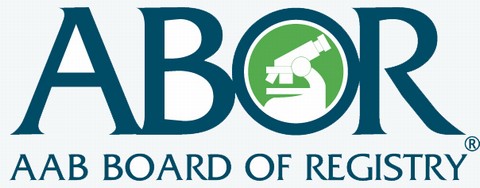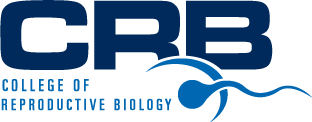A&E Full Module
The Andrology and Embryology module contains all of the courses listed below:
Male and Female Infertility
Course Objective: Learn and understand the causes of male and female infertility.
Male Reproductive Function
Course Objective: Describe spermatogenesis/histology of the testis; describe the hypothalamic-pituitary-gonadal axis and paracrine controls; describe the organs and function of the male genital tract and understand sperm transport and maturation; describe the structure of the penis and understand the principals of erection and ejaculation; describe semen and sperm structure; and male infertility.
Antisperm Antibody and Sperm-Cervical Mucus Testing
Course Objective - Sperm-Cervical Mucus: role of cervical mucus in fertility; collection of cervical mucus; postcoital test, the fern test; sperm-cervical contact test; and the capillary tube test. Antisperm Antibodies: etiology and pathogenesis of ASAB; tests for agglutinating and immobilizing ASAB; immunobead and MAR test; interpretation of results; and treatment of immunologic infertility.
The Semen Analysis
Course Objective: Sample production; macroscopic analysis; microscopic analysis; andrology QC and PT; and the semen analysis report.
Sperm Function Tests
Course Objective: Know the tests currently performed on semen specimens and the interpretation, and to understand the significance (and limitations) of sperm function testing results for clinical outcomes. Topics to be discussed: cervical mucus penetration, hypo-osmotic swelling test, DNA fragmentation assay, sperm anueploidy, acrosome reaction testing, zona binding assays, and sperm penetration assay.
Female Reproductive Physiology
Course Objective: This course aims to familiarize the participant with the essential anatomical and physiological components that must be present and their correct function to ensure the production of viable human female gametes.
Male Gamete Preparation for ART
Course Objective: Collection of sperm – ejaculate/surgical; processing of sperm samples; insemination; and cryopreservation.
Culture Techniques for the IVF Laboratory
Course Objective: During this course you will learn to understand the evolution and components of the modern embryo culture system, know your medium, make educated choices about the medium you use and use an appropriate culture system.
Gamete Biology: Fertilization and Implantation
Course Objective: The participant will learn how mature male and female gametes are produced as well as how they arrive at the point of fertilization, how they interact to bring about fertilization and oocyte activation and how the fertilized egg develops through the stages of pre-implantation development.
Ovarian Stimulation
Course Objective: This course outlines various ovarian stimulation protocols in use for ART. Persons studying this course will have a better understanding of ovarian stimulation protocols, their mechanism of action, and the physiology behind their biological responses.
Micromanipulation in ART
Course Objective: Review the history of all techniques; discuss criteria for application and patient selection; understand the technical aspects of the procedures; and discuss success rates of procedures.
Embryo Selection and Embryo Transfer
Course Objective: This course discusses how embryo selection and embryo transfer techniques affect pregnancy outcome. In addition, individuals watching this course will understand the limitations of embryo selection in determining pregnancy outcomes and the importance of proficient embryo transfer in achieving optimal pregnancy outcomes.
Cryopreservation of Reproductive Cells and Tissues
Course Objective: Slow freezing and vitrification; cryo-injuries, vitrification/freezing solutions; cooling and warming rates; and working with cryoprotectants.
QC and QA in the ART Laboratory
Course Objective: Understand the principles of quality control (QC), quality assurance (QA), and quality improvement (QI); review the various procedures used in a quality control program and understand the purpose and objectives of a QC program; and describe basic record-keeping and oversight requirements for quality assurance program.
The New Genetics of Infertility
Course Objective: Know the fundamental principles of molecular biology; know the indications for genetic testing; define the approaches used to analyze genetic defects; define the approaches used to analyze genes or markers; and understand the importance of reproductive genetics to andrology and embryology.
Laboratory Management: CLIA and OSHA
OSHA implements regulations to control occupational exposures to hazardous chemicals and to protect laboratory personnel from contracting diseases spread through contact with blood and other body fluids, therefore, clinical laboratories should have the following plans: Bloodborne Pathogen Plan, Hazard Communication Plan, and Chemical Hygiene Plan.Course Objective: CLIA - general provisions; provider performed microscopy; proficiency testing; quality systems; personnel; and inspections, sanctions and enforcement.
Laboratory Management: General
Approved for 2.0 CEUsCourse Objective: Laboratory director responsibilities; laboratory budget and finance; laboratory statistics and QC; quality assurance; model compliance plans; HIPAA; Stark Law and anti-kickback policies; and employment law.
How to purchase and begin taking a course/module:
- Select "Register" below and continue to the login page.
Login using your username (email address) and password. Review and update your profile with any new information. Click the "Save and Continue" at the bottom of the page to continue to Step 2. If you do NOT have a profile with the American Association of Bioanalysts, you will need to create one. (Please read the box to the right for important information about creating a profile.)
IMPORTANT: Make sure your CEUs are recorded!
All AAB Members or ABB Diplomates/Certificants have a profile. If you have not activated your login access, call the AAB office at 314-241-1445 for assistance.
If you already have a profile and create a new one when ordering online programs, the CEUs you obtained will not be recorded in your record.
- In Step 2, confirm your registration selection, click “proceed,” and continue to Step 3 to enter your payment information. The next page will be the "Enrollment Confirmation" page.
- On the "Enrollment Confirmation" page, you can immediately begin the course by clicking, "Click here to begin the course." If you want to take the course later, refer to the registration confirmation email that is automatically sent to you after registering for a course. The email contains a link to begin the course and a link for the related quiz. KEEP THIS EMAIL.
- For security purposes, when you click the link to the course, you will be prompted to login, enter your username and password. This takes you to the course page.
- Click the course link and begin.
- After viewing the course, return to the course page via the back button in your internet browser to take the quiz. You must complete the quiz with a grade of 70% or greater to receive your CEUs. You can take the quiz as many times as needed. You can refer to the link in your registration confirmation email to view the course or take the quiz at anytime within your 180-day enrollment period.
- After successfully completing the quiz, you will be prompted to print a certificate for your records, AAB/ABB's Professional Enrichment Educational Renewal (PEER) office is electronically notified when AAB members and ABB Diplomates and Certificants complete a course, therefore, your record will automatically update with the CEUs that you received.
- About
- Membership
- Certification
- Continuing Education
- Activities
- News






